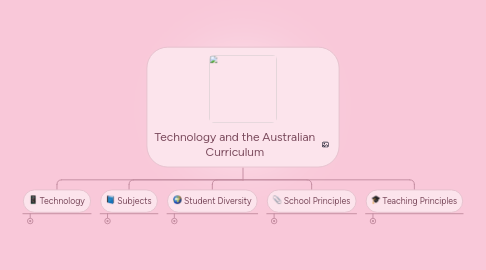
1. Technology
1.1. Rationale: Technologies enrich and impact on the lives of people and societies globally. Society needs enterprising students who can make discerning decisions about the development and use of technologies, develop solutions to complex challenges and contribute to sustainable patterns of living. Technologies can play an important role in transforming, restoring and sustaining societies and natural, managed and constructed environments.
1.2. http://k10outline.scsa.wa.edu.au/home/p-10-curriculum/curriculum-browser/technologies
1.3. The Western Australian Curriculum: Technologies describes two distinct but related subjects:
1.3.1. Design and Technologies, in which students use design thinking and technologies to generate and produce solutions for authentic needs and opportunities
1.3.1.1. Digital Technologies, in which students use computational thinking and information systems to define, design and implement solutions.
1.3.1.1.1. https://scratch.mit.edu
1.3.1.1.2. https://studio.code.org/
1.3.1.1.3. https://code.org/educate
1.3.1.1.4. http://projeqt.com/
1.3.1.1.5. http://projeqt.com/education
1.4. Aims: The Western Australian Curriculum: Technologies aims to develop the knowledge, understandings and skills to ensure that, individually and collaboratively, students http://k10outline.scsa.wa.edu.au/home/p-10-curriculum/curriculum-browser/technologies/technologies-overview/aims
1.5. Organisation: The Western Australian Curriculum: Technologies learning area comprises two subjects:
1.5.1. Design and Technology: http://k10outline.scsa.wa.edu.au/home/p-10-curriculum/curriculum-browser/technologies/design-and-technologies2
1.5.1.1. Digital Technologies: http://k10outline.scsa.wa.edu.au/home/p-10-curriculum/curriculum-browser/technologies/digital-technologies
1.6. The Technologies curriculum is written on the basis that all students will study both Technologies subjects from Pre-primary to the end of Year 8. Within Design and Technologies (Engineering principles and systems; Food and fibre production; Food specialisations; Materials and technologies specialisations), students have the opportunity to study at least one of the contexts.
1.7. Student Diversity: http://k10outline.scsa.wa.edu.au/home/p-10-curriculum/curriculum-browser/technologies/technologies-overview/student-diversity
1.8. Ways of Teaching: http://k10outline.scsa.wa.edu.au/home/p-10-curriculum/curriculum-browser/technologies/technologies-overview/ways-of-teaching
1.9. Ways of Assessing: http://k10outline.scsa.wa.edu.au/home/p-10-curriculum/curriculum-browser/technologies/technologies-overview/ways-of-assessing
1.10. General Capabilities: http://k10outline.scsa.wa.edu.au/home/p-10-curriculum/curriculum-browser/technologies/technologies-overview/general-capabilities
1.11. Cross Curriculum Priorities: http://k10outline.scsa.wa.edu.au/home/p-10-curriculum/curriculum-browser/technologies/technologies-overview/cross-curriculum-priorities
1.12. Technology Glossary: http://k10outline.scsa.wa.edu.au/home/p-10-curriculum/curriculum-browser/technologies/technologies-overview/Tech_Glossary.pdf
2. Subjects
2.1. English
2.1.1. Rational: http://k10outline.scsa.wa.edu.au/home/p-10-curriculum/curriculum-browser/english/overview/rationale
2.1.1.1. Aims: http://k10outline.scsa.wa.edu.au/home/p-10-curriculum/curriculum-browser/english/overview/aims
2.1.1.1.1. Content Structure: http://k10outline.scsa.wa.edu.au/home/p-10-curriculum/curriculum-browser/english/overview/content-structure
2.1.2. K10 outline: http://k10outline.scsa.wa.edu.au/home/p-10-curriculum/curriculum-browser/english
2.2. Mathamatics
2.2.1. Rational:http://k10outline.scsa.wa.edu.au/home/p-10-curriculum/curriculum-browser/mathematics/overview/rationale
2.2.1.1. Aims: http://k10outline.scsa.wa.edu.au/home/p-10-curriculum/curriculum-browser/mathematics/overview/aims
2.2.1.2. Content Structure: http://k10outline.scsa.wa.edu.au/home/p-10-curriculum/curriculum-browser/mathematics/overview/content-structure
2.2.1.2.1. Achievement Standards: http://k10outline.scsa.wa.edu.au/home/p-10-curriculum/curriculum-browser/mathematics/overview/achievement-standards
2.3. Science
2.3.1. Rational: http://k10outline.scsa.wa.edu.au/home/p-10-curriculum/curriculum-browser/science/overview/rationale
2.3.1.1. Aims: http://k10outline.scsa.wa.edu.au/home/p-10-curriculum/curriculum-browser/science/overview/aims
2.3.1.1.1. Content Structure: http://k10outline.scsa.wa.edu.au/home/p-10-curriculum/curriculum-browser/science/overview/content-structure
2.4. The Arts
2.5. Humanities and Social sciences
2.6. History
2.7. Health and Physical Education
2.8. Languages
3. Student Diversity
3.1. All students from Kindergarten to their final year of secondary schooling in Western Australia have a right to an education that is equitable and embraces diversity. This right is enshrined in the United Nations Conventions on the Rights of the Child. It is also a feature of the Melbourne Declaration on Educational Goals for Young Australians which is central to the Australian Curriculum. The Authority is committed to working in ways that promote the interests and rights of students in schools and home education contexts.
3.2. This education must be inclusive of students’ individual strengths and needs. Differences in terms of characteristics such as ethnicity, language (linguistic background), culture, gender, socioeconomic status, disability, sexual orientation or geographic location should not be allowed to detract from a student’s access to the high-quality education that is their right. The materials the Authority produces and the policies and procedures it follows seek to promote inclusivity.
3.2.1. ABLEWA
3.2.1.1. Abilities Based Learning Education Western Australia
3.2.1.1.1. ABLEWA provides a suite of curriculum, pedagogy, assessment and reporting resources that assist teachers in recognising and responding to the diverse learning needs of all students, and in assessing and reporting student learning, monitoring student progress and providing accurate intervention advice.

